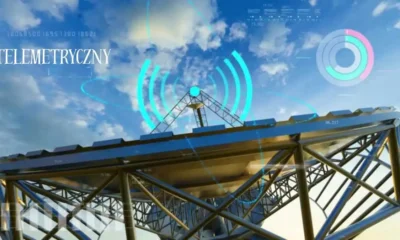HOME IMPROVEMENT
Noise Reduction and Roofing: What You Need to Consider

Unwanted noise is one of the most disruptive elements of daily life, whether it comes from traffic, weather, neighbors, or nature. While windows and walls are often the first considerations for soundproofing, the roof plays a surprisingly significant role in managing how sound enters a home. The structure, materials, and design of your roofing system can all affect how external noise is either absorbed or amplified.
In modern home design, comfort isn’t just about temperature—it’s also about quiet. For homeowners seeking refuge from urban noise or looking to create more peaceful interior spaces, roofing choices can make a difference. This guide explores how various aspects of roofing construction influence acoustics and what steps can be taken to reduce interior noise through smarter roof design.
Why Roofs Matter in Acoustic Control
A roof is the topmost barrier between the interior of your home and the sounds outside. From falling rain and hail to aircraft, wind, or even wildlife, the roof is constantly interacting with airborne noise. In two-story homes or structures with vaulted ceilings, sound intrusion from above can be even more pronounced.
While soundproofing is often associated with thick walls or double-glazed windows, roofs cover more square footage and surface area than you might realize. How they’re built, insulated, and finished has a direct impact on indoor sound levels.
Common Sources of Roof-Related Noise
Understanding where roof noise comes from helps identify what materials and strategies will work best for noise reduction.
- Rain and Hail: Raindrops or hailstones striking metal, tile, or thin roof decking can create a drumming or pinging sound.
- Wind: Air pressure shifts across the roof’s surface can cause whistling or rattling, especially with loose components.
- Animals: Birds, squirrels, or raccoons can produce scratching, scampering, or thumping sounds.
- Airborne Noise: External traffic, airplanes, or construction sounds that travel through roof penetrations or vents.
Roofing systems that lack sufficient density, insulation, or secure installation are more susceptible to these acoustic intrusions.
Roofing Materials and Their Acoustic Properties
Each type of roofing material has different acoustic characteristics. When it comes to noise reduction, denser and softer materials generally perform better.
1. Asphalt Shingles
Asphalt shingles are among the most common residential roofing options. While not explicitly designed for soundproofing, they do offer moderate acoustic insulation.
- Noise profile: Absorbs sound reasonably well due to layered composition.
- Enhancement tip: Pair with quality underlayment and roof decking to minimize sound intrusion.
2. Metal Roofing
Metal roofs are known for their durability and energy efficiency, but they have a reputation for being loud during rainstorms.
- Noise profile: Amplifies impact noise unless properly installed with insulation and solid decking.
- Enhancement tip: Use acoustic underlayment and insulate attic spaces thoroughly.
3. Clay and Concrete Tiles
Tile roofs are heavy and naturally dense, which makes them good for reducing airborne sound.
- Noise profile: Dampens impact and airborne noise well.
- Enhancement tip: Ensure tiles are securely installed to prevent clatter from wind.
4. Slate Roofing
Slate is one of the heaviest roofing materials and excels at sound reduction.
- Noise profile: Excellent barrier to both impact and ambient sounds.
- Enhancement tip: Best when paired with heavy-duty underlayment and reinforced structural support.
5. Wood Shakes or Shingles
Wood provides moderate noise dampening and a unique aesthetic, but it may transmit more sound if gaps exist.
- Noise profile: Natural material absorbs some noise but may creak or settle.
- Enhancement tip: Seal gaps and reinforce with thick underlayment.
Insulation: The Unsung Hero of Soundproofing
Regardless of roofing material, insulation plays a leading role in sound management. A well-insulated roof not only keeps your home warmer or cooler—it also limits how much noise travels through.
Key insulation types for sound control:
- Spray Foam Insulation: Seals gaps while reducing sound transfer.
- Batt or Roll Insulation: Absorbs airborne and impact noise in attics.
- Blown-In Insulation: Fills irregular spaces, improving acoustic absorption.
Attic insulation provides a sound buffer, especially in homes where living areas sit directly below the roof.
The Role of Roof Decking and Underlayment
Often overlooked, roof decking and underlayment serve as the middle layers between the exterior material and the interior ceiling.
- Roof Decking: Plywood or oriented strand board (OSB) forms the base for roofing. Thicker decking absorbs more vibration and reduces resonance.
- Underlayment: Synthetic or felt materials placed under shingles can provide a degree of sound dampening.
Premium underlayments designed for noise control can noticeably reduce footfall or impact noise.
Ventilation, Penetrations, and Noise Leakage
Even a dense roof can transmit noise if gaps, vents, or penetrations allow sound to pass through. Properly sealing these areas is vital.
Strategies to reduce noise leakage:
- Use insulated roof vents or baffles.
- Seal gaps around chimneys, skylights, and exhaust ducts.
- Install acoustic caulk or foam to fill cracks or joints.
Every unsealed opening is a potential sound tunnel. Attention to detail during construction or renovation can minimize these weak points.
Attic Design and Sound Behavior
The size, shape, and construction of the attic space can also influence how noise moves through the roof.
- Unfinished Attics: Sound waves can bounce around open cavities.
- Finished Attics: Enclosed ceilings and walls block more noise.
- Vaulted Ceilings: Less buffering space means greater exposure to noise.
Adding acoustic insulation or sound-absorbing ceiling materials can help create a quieter interior, especially in open-concept or high-ceilinged spaces.
Complementary Elements: Siding, Gutters, and Decking
While the roof does a lot of the work, other exterior features contribute to sound dynamics:
- Siding: Dense siding materials like fiber cement or insulated vinyl add to the building’s sound resistance.
- Gutters: Loose or poorly secured gutters can rattle or transmit rain noise directly to the structure.
- Decking and Porches: Overhead covers or porch roofs may transmit or dampen noise depending on how they’re built.
Designing these elements in harmony enhances both acoustic performance and overall exterior resilience.
Professional Assessment and Planning
For homeowners concerned with acoustic comfort, consulting with roofing services in Hendersonville is a wise step. They can assess current material conditions, insulation levels, and vent sealing to determine what adjustments would yield the most noticeable improvements.
A business like AG Exterior Solutions, with experience across roofing, siding, gutters, and decking, can provide guidance on comprehensive exterior upgrades that factor in sound control alongside weather protection.
Design Goals Beyond Silence
Noise reduction doesn’t mean eliminating all sound. It means shaping your home’s acoustic environment to create a more peaceful, enjoyable experience.
- Reduce distraction: Quiet homes promote better focus and relaxation.
- Improve sleep: Less noise from wind or rain means more restful nights.
- Increase home value: Energy-efficient, well-insulated homes appeal to modern buyers.
When roofing supports these goals, it becomes part of a broader comfort strategy that touches every part of the home.
Conclusion: A Quieter Roof Is a Smarter Roof
Noise pollution is an often underestimated factor in home comfort. By addressing it through thoughtful roofing choices, homeowners can significantly improve their living environment.
From material selection and attic insulation to underlayment upgrades and sealing techniques, roofing can serve as both a barrier and a buffer against unwanted sound. Homeowners who invest in quiet roofing solutions benefit from less stress, more rest, and greater satisfaction.
Though invisible from inside the home, your roof is always at work—blocking the elements, securing your structure, and yes, managing sound. With insight from professionals and smart design decisions, it can do all of that more quietly, more efficiently, and more beautifully than ever before.
-

 BIOGRAPHY7 months ago
BIOGRAPHY7 months agoBehind the Scenes with Sandra Orlow: An Exclusive Interview
-

 HOME1 year ago
HOME1 year agoDiscovering Insights: A Deep Dive into the //vital-mag.net blog
-

 HOME1 year ago
HOME1 year agoSifangds in Action: Real-Life Applications and Success Stories
-

 BIOGRAPHY1 year ago
BIOGRAPHY1 year agoThe Woman Behind the Comedian: Meet Andrew Santino Wife




























